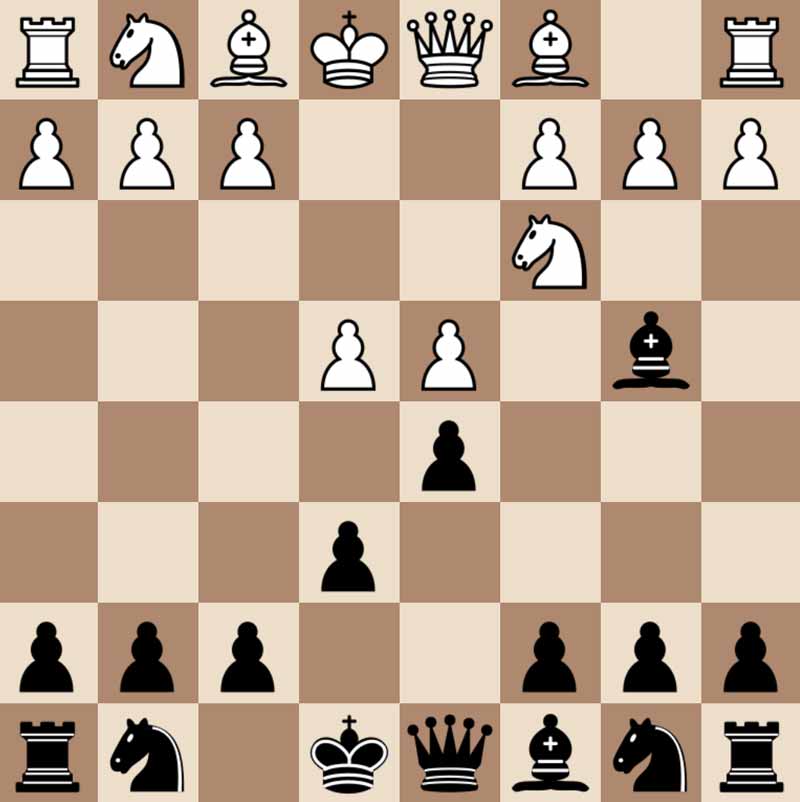Is the French Winawer a great opening? Can you rely on it as your main choice weapon or is it just a one-game wonder? In this article, you’ll find out the answers.
We’ll also share some specific moves and ideas to make things easier for you. By the end of this article, you’ll know whether you should employ this opening in serious games or not.
Let’s get started!
Table of Contents
Is the Winawer a good opening or not?
The simple answer to this question is a resounding yes! It is an opening that gives Black decent chances to fight for equality and in some cases, go for something more than that too.
Also, the opening is popular among top grandmasters who wish to fight for an edge in the French. Some of the elite grandmasters who have played this line include Magnus Carlsen and Fabiano Caruana, and that too in big events.
However, there are some reasons when it can be a bad choice as well. We will see from both perspectives.
3 Reasons why the Winawer is a good choice
1. It’s gives Black fighting chances
Any opening that gives Black fighting chances is going to be popular. In French, that line is undoubtedly the Winawer. Black’s central strategy in this opening is based on counterattack.
Think about the moves –
1.e4 e6 2.d4 d5 3.Nc3 Bb4
With 3…Bb4, Black makes their intention clear. They are ready to imbalance the position by giving up their important dark-squared bishop. In return, they want to weaken White’s pawn structure. Their whole play revolves around this strategy.
2. It’s a sharp and aggressive opening
If you love aggressive positions that are very complicated, then you’ll have a good time in this opening.
Let us show you one of the most important lines in this system.
1.e4 e6 2.d4 d5 3.Nc3 Bb4 4.e5 c5 5.a3 Bxc3+ 6.bxc3 Ne7 7.Qg4 Qc7 8.Qxg7 Rg8 9.Qxh7
Black gives up a pawn at the expense of destroying White’s king shelter. They also have a slight lead in development.
9…cxd4 10.Ne2
Of course not 10.cxd4?? as 10…Qc3+ would hang a rook.
10…dxc3 11.f4 Nbc6
Now, White has a few lines here –
12.Qd3
If 12.Nxc3, then 12…Nd4 13.Bb2 Bd7 14.O-O-O Qb6 is an interesting option. This position has been played by the world champion Magnus Carlsen and the French Expert Nikita Vituigov, with the Black pieces. Both the games ended in a draw after precise play by both sides. After 12.Qd3, Black has an interesting pawn sacrifice.
12…d4! 13.Nxd4 Nxd4 14.Qxd4 Bd7
Black chooses to defend their advanced c3-pawn, which severely restricts White’s development. Practically speaking, the position is complicated and Black has enormous chances. Such positions are difficult to play for the defending side, if they aren’t aware of the typical plans and ideas.
3. Black is comfortable in most lines
For White to play for an advantage, they have to know the critical mainline(the one we mentioned above) and the precise moves to play it. In other lines, Black can achieve equality with ease.
After 3…Bb4, lines like 4.exd5, 4.Nge2, 4.Bd2 aren’t objectively challenging. Black gets an easy game in those lines and is very comfortable.
By now, you should know that it’s absolutely fine to play the Winawer. But, there is one downside to it.
When the Winawer can be a bad choice
The main downside of playing this sub variation of the French is the vast opening theory. If you want to employ this opening with the Black pieces, then you’ve to be well-prepared for it. This could mean spending time analyzing the games in this position and memorizing how to play the opening lines.
In some instances, you might also need to prepare this opening with the engine. This is especially true on higher levels.
To give you an idea of how much you’ll need to study, let me give you an example.
The reputed Grandmaster Repertoire Series for French has 3 volumes. Two of them are covered by the Winawer, which is what they recommend as the main weapon for Black in the French –
Volume 1 covers all other lines in the Winawer, apart from 7.Qg4.
Volume 2 is entirely dedicated to only and only 7.Qg4 in the Winawer, which is the mainline.
Volume 3 covers all other French Variations that the Black side should know. This includes the Exchange variation, the Advance variation and the Tarrasch.
So if you want to study the French, you’ll have to spend around 66% of your time with the Winawer.
The Winawer with 3…Bb4 is a completely playable opening that is objectively sound. It’s not a one-game wonder and can be employed in a serious tournament game. It’s a good choice for those who love complications and aggressive play. Also it promises a fighting game with the Black pieces. But remember that you’ll have to devote time to study it.


